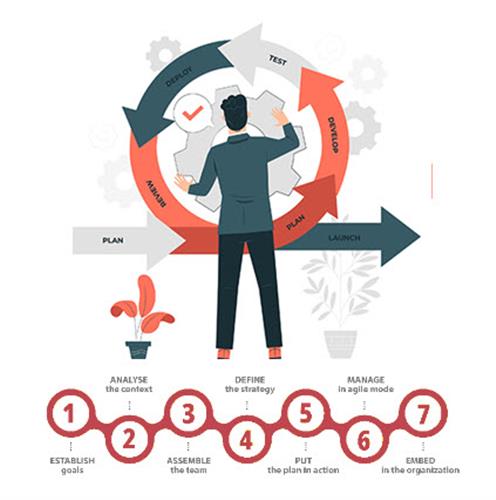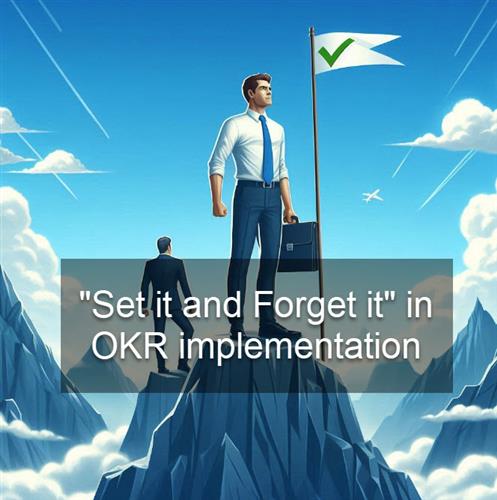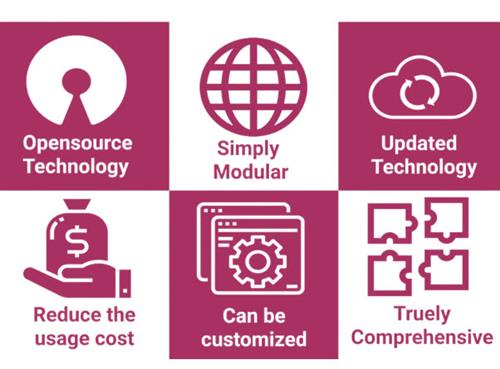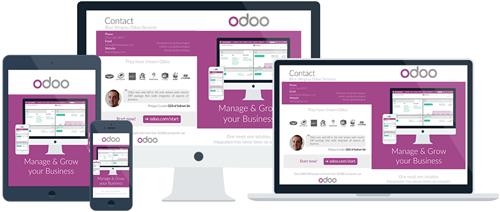
A Deep Dive Into Mobile App Testing Software: Paid vs. Free Tools
Last updated: March 12, 2025 Read in fullscreen view
- 18 Oct 2020
 How to use the "Knowns" and "Unknowns" technique to manage assumptions 22/1002
How to use the "Knowns" and "Unknowns" technique to manage assumptions 22/1002 - 05 Oct 2025
 The New Facebook Algorithm: A Paradigm Shift in Content Discovery 21/52
The New Facebook Algorithm: A Paradigm Shift in Content Discovery 21/52 - 01 Oct 2020
 Fail fast, learn faster with Agile methodology 16/982
Fail fast, learn faster with Agile methodology 16/982 - 03 Nov 2023
 Why Is Billable Viable Product An Alternative To Minimum Viable Product? 15/172
Why Is Billable Viable Product An Alternative To Minimum Viable Product? 15/172 - 21 Sep 2023
 Abraham Wald and the Missing Bullet Holes 12/609
Abraham Wald and the Missing Bullet Holes 12/609 - 13 Oct 2021
 Outsourcing Software Development: MVP, Proof of Concept (POC) and Prototyping. Which is better? 12/436
Outsourcing Software Development: MVP, Proof of Concept (POC) and Prototyping. Which is better? 12/436 - 12 Oct 2022
 14 Common Reasons Software Projects Fail (And How To Avoid Them) 11/510
14 Common Reasons Software Projects Fail (And How To Avoid Them) 11/510 - 30 Jul 2024
 The Future of IT Consulting: Trends and Opportunities 10/140
The Future of IT Consulting: Trends and Opportunities 10/140 - 18 Jul 2024
 The 8 Best ways to Innovate your SAAS Business Model in 2024 9/216
The 8 Best ways to Innovate your SAAS Business Model in 2024 9/216 - 20 Jan 2021
 Fail early, fail often, fail cheap, fail safe but always fail forward 8/699
Fail early, fail often, fail cheap, fail safe but always fail forward 8/699 - 19 Oct 2021
 Is gold plating good or bad in project management? 8/760
Is gold plating good or bad in project management? 8/760 - 06 Feb 2021
 Why fail fast and learn fast? 8/386
Why fail fast and learn fast? 8/386 - 10 Dec 2021
 What is a Kano Analysis? 8/823
What is a Kano Analysis? 8/823 - 10 Nov 2022
 Poor Code Indicators and How to Improve Your Code? 8/217
Poor Code Indicators and How to Improve Your Code? 8/217 - 28 Nov 2025
 Best Kentico CMS Development Practices for Agile Software Teams 8/20
Best Kentico CMS Development Practices for Agile Software Teams 8/20 - 10 Aug 2024
 Odoo vs. Lark: A Comprehensive Comparison 8/694
Odoo vs. Lark: A Comprehensive Comparison 8/694 - 07 Oct 2025
 Case Study: Using the “Messaging House” Framework to Build a Digital Transformation Roadmap 7/56
Case Study: Using the “Messaging House” Framework to Build a Digital Transformation Roadmap 7/56 - 20 Jan 2022
 TIGO Self-Organization Practice: Change Management Workflow 7/438
TIGO Self-Organization Practice: Change Management Workflow 7/438 - 27 Jul 2024
 Positive Psychology in the Digital Age: Future Directions and Technologies 7/342
Positive Psychology in the Digital Age: Future Directions and Technologies 7/342 - 05 Aug 2024
 Revisiting the Mistake That Halted Japan's Software Surge 7/324
Revisiting the Mistake That Halted Japan's Software Surge 7/324 - 14 Aug 2024
 From Steel to Software: The Reluctant Evolution of Japan's Tech Corporates 7/492
From Steel to Software: The Reluctant Evolution of Japan's Tech Corporates 7/492 - 01 Mar 2023
 Bug Prioritization - What are the 5 levels of priority? 6/210
Bug Prioritization - What are the 5 levels of priority? 6/210 - 01 Jan 2024
 The pros and cons of the Centralized Enterprise Automation Operating model 6/175
The pros and cons of the Centralized Enterprise Automation Operating model 6/175 - 28 Jul 2022
 POC, Prototypes, Pilots and MVP: What Are the Differences? 6/617
POC, Prototypes, Pilots and MVP: What Are the Differences? 6/617 - 16 Jun 2022
 Rapid Application Development (RAD): Pros and Cons 6/806
Rapid Application Development (RAD): Pros and Cons 6/806 - 11 Nov 2021
 What is an IT Self-service Portal? Why is it Important to Your Business? 6/375
What is an IT Self-service Portal? Why is it Important to Your Business? 6/375 - 14 Oct 2021
 Advantages and Disadvantages of Time and Material Contract (T&M) 5/799
Advantages and Disadvantages of Time and Material Contract (T&M) 5/799 - 31 Oct 2021
 Tips to Fail Fast With Outsourcing 5/379
Tips to Fail Fast With Outsourcing 5/379 - 12 Dec 2021
 Zero Sum Games Agile vs. Waterfall Project Management Methods 5/378
Zero Sum Games Agile vs. Waterfall Project Management Methods 5/378 - 31 Aug 2022
 What are the best practices for software contract negotiations? 5/218
What are the best practices for software contract negotiations? 5/218 - 05 Mar 2021
 How do you minimize risks when you outsource software development? 5/319
How do you minimize risks when you outsource software development? 5/319 - 08 Oct 2022
 KPI - The New Leadership 5/561
KPI - The New Leadership 5/561 - 04 Oct 2022
 Which ERP implementation strategy is right for your business? 5/281
Which ERP implementation strategy is right for your business? 5/281 - 11 Oct 2022
 Why choose Billable Viable Product (BVP) over Minimum Viable Product (MVP) 5/321
Why choose Billable Viable Product (BVP) over Minimum Viable Product (MVP) 5/321 - 18 Aug 2022
 What are the consequences of poor requirements with software development projects? 5/248
What are the consequences of poor requirements with software development projects? 5/248 - 05 Sep 2023
 The Cold Start Problem: How to Start and Scale Network Effects 5/173
The Cold Start Problem: How to Start and Scale Network Effects 5/173 - 17 Mar 2025
 Integrating Salesforce with Yardi: A Guide to Achieving Success in Real Estate Business 5/151
Integrating Salesforce with Yardi: A Guide to Achieving Success in Real Estate Business 5/151 - 02 Dec 2024
 The Intersection of AI and Business Analytics: Key Concepts to Master in Your Business Analytics Course 4/260
The Intersection of AI and Business Analytics: Key Concepts to Master in Your Business Analytics Course 4/260 - 03 Oct 2025
 Top CMS Trends 2026: The Future of Digital Content Management 4/7
Top CMS Trends 2026: The Future of Digital Content Management 4/7 - 07 Dec 2023
 The Myths Of Requirements 4/214
The Myths Of Requirements 4/214 - 10 Dec 2023
 Pain points of User Acceptance Testing (UAT) 4/423
Pain points of User Acceptance Testing (UAT) 4/423 - 18 Jul 2021
 How To Ramp Up An Offshore Software Development Team Quickly 4/527
How To Ramp Up An Offshore Software Development Team Quickly 4/527 - 13 Dec 2020
 Move fast, fail fast, fail-safe 4/296
Move fast, fail fast, fail-safe 4/296 - 28 Dec 2021
 8 types of pricing models in software development outsourcing 4/420
8 types of pricing models in software development outsourcing 4/420 - 28 Oct 2022
 Build Operate Transfer (B.O.T) Model in Software Outsourcing 3/366
Build Operate Transfer (B.O.T) Model in Software Outsourcing 3/366 - 04 Oct 2021
 Product Validation: The Key to Developing the Best Product Possible 3/298
Product Validation: The Key to Developing the Best Product Possible 3/298 - 02 Nov 2021
 [Case Study] Streamlined Data Reporting using Tableau 3/282
[Case Study] Streamlined Data Reporting using Tableau 3/282 - 17 Jun 2021
 What is IT-business alignment? 3/348
What is IT-business alignment? 3/348 - 23 Sep 2021
 INFOGRAPHIC: Top 9 Software Outsourcing Mistakes 3/414
INFOGRAPHIC: Top 9 Software Outsourcing Mistakes 3/414 - 17 Feb 2022
 Prioritizing Software Requirements with Kano Analysis 3/286
Prioritizing Software Requirements with Kano Analysis 3/286 - 01 Dec 2023
 Laws of Project Management 3/251
Laws of Project Management 3/251 - 21 Dec 2023
 Top 12 Low-Code Platforms To Use in 2024 3/1165
Top 12 Low-Code Platforms To Use in 2024 3/1165 - 31 Dec 2022
 The New Normal for Software Development 3/346
The New Normal for Software Development 3/346 - 02 Dec 2022
 Success Story: Satsuki - Sales Management Software, back office app for School Subscription Management 3/225
Success Story: Satsuki - Sales Management Software, back office app for School Subscription Management 3/225 - 26 Sep 2024
 Successful Project Management Techniques You Need to Look Out For 3/372
Successful Project Management Techniques You Need to Look Out For 3/372 - 27 Feb 2025
 How AI Agents are Changing Software Development? 3/173
How AI Agents are Changing Software Development? 3/173 - 09 Oct 2024
 Short-Form Video Advertising: The Secret to Captivating Your Audience 3/110
Short-Form Video Advertising: The Secret to Captivating Your Audience 3/110 - 04 Mar 2023
 [Medium] Box-Ticking: The Management Strategy That’s Killing your Productivity 3/523
[Medium] Box-Ticking: The Management Strategy That’s Killing your Productivity 3/523 - 10 Sep 2024
 Leading Remote Teams in Hybrid Work Environments 3/130
Leading Remote Teams in Hybrid Work Environments 3/130 - 25 Jan 2025
 The Decline of Traditional SaaS and the Rise of AI-first Applications 2/81
The Decline of Traditional SaaS and the Rise of AI-first Applications 2/81 - 01 May 2024
 Warren Buffett’s Golden Rule for Digital Transformation: Avoiding Tech Overload 2/192
Warren Buffett’s Golden Rule for Digital Transformation: Avoiding Tech Overload 2/192 - 22 Nov 2024
 The Role of AI in Enhancing Business Efficiency and Decision-Making 2/162
The Role of AI in Enhancing Business Efficiency and Decision-Making 2/162 - 16 Aug 2022
 What is a Headless CMS? 2/229
What is a Headless CMS? 2/229 - 16 Sep 2022
 Examples Of Augmented Intelligence In Today’s Workplaces Shaping the Business as Usual 2/397
Examples Of Augmented Intelligence In Today’s Workplaces Shaping the Business as Usual 2/397 - 18 Aug 2024
 The Future of Web Development: Emerging Trends and Technologies Every Developer Should Know 2/175
The Future of Web Development: Emerging Trends and Technologies Every Developer Should Know 2/175 - 13 Feb 2021
 Why is TIGOSOFT a software house for Enterprise Application Development? 2/339
Why is TIGOSOFT a software house for Enterprise Application Development? 2/339 - 19 Apr 2021
 7 Most Common Time-Wasters For Software Development 2/533
7 Most Common Time-Wasters For Software Development 2/533 - 03 Sep 2022
 The secret of software success: Simplicity is the ultimate sophistication 1/189
The secret of software success: Simplicity is the ultimate sophistication 1/189 - 31 Dec 2022
 Future of Software Development Trends and Predictions for 2023 1/123
Future of Software Development Trends and Predictions for 2023 1/123 - 03 Apr 2021
 How digital asset management streamlines your content workflow? 1/315
How digital asset management streamlines your content workflow? 1/315 - 02 Sep 2024
 Toolzoon Review: Features, Benefits, and Essential Tools for Enhanced Productivity 1/186
Toolzoon Review: Features, Benefits, and Essential Tools for Enhanced Productivity 1/186 - 19 Dec 2023
 How AI is Transforming Software Development? 1/278
How AI is Transforming Software Development? 1/278 - 12 Aug 2024
 Understanding Google Analytics in Mumbai: A Beginner's Guide 1/86
Understanding Google Analytics in Mumbai: A Beginner's Guide 1/86 - 26 Dec 2023
 Improving Meeting Effectiveness Through the Six Thinking Hats 1/210
Improving Meeting Effectiveness Through the Six Thinking Hats 1/210 - 31 Dec 2023
 Software Development Outsourcing Trends to Watch Out for in 2024 1/166
Software Development Outsourcing Trends to Watch Out for in 2024 1/166 - 05 Jan 2024
 Easy ASANA tips & tricks for you and your team 1/182
Easy ASANA tips & tricks for you and your team 1/182 - 11 Jan 2024
 What are the Benefits and Limitations of Augmented Intelligence? 1/440
What are the Benefits and Limitations of Augmented Intelligence? 1/440 - 03 Jan 2024
 Why Partnership is important for Growth? 1/147
Why Partnership is important for Growth? 1/147 - 20 Feb 2025
 How Machine Learning is Shaping the Future of Digital Advertising 1/89
How Machine Learning is Shaping the Future of Digital Advertising 1/89 - 23 Jun 2025
 AI Avatars in the Metaverse: How Digital Beings Are Redefining Identity and Social Interaction 1/92
AI Avatars in the Metaverse: How Digital Beings Are Redefining Identity and Social Interaction 1/92 - 20 Aug 2025
 What Is Agentic AI? The Next Phase of Artificial Intelligence 1/100
What Is Agentic AI? The Next Phase of Artificial Intelligence 1/100 - 10 Sep 2024
 AI in Email Marketing: Personalization and Automation 1/158
AI in Email Marketing: Personalization and Automation 1/158 - 21 Oct 2024
 Simplify Your Workflow with an AI Summary Generator /107
Simplify Your Workflow with an AI Summary Generator /107 - 12 Sep 2024
 Be Water, My Friend: Fluidity, Flow & Going With the Flow /150
Be Water, My Friend: Fluidity, Flow & Going With the Flow /150 - 25 Sep 2024
 Enhancing Decision-Making Skills with an MBA: Data-Driven Approaches for Business Growth /180
Enhancing Decision-Making Skills with an MBA: Data-Driven Approaches for Business Growth /180 - 15 Aug 2025
 Quantum Technology: Global Challenges and Opportunities for Innovators /62
Quantum Technology: Global Challenges and Opportunities for Innovators /62 - 18 Jan 2024
 Self-healing code is the future of software development /203
Self-healing code is the future of software development /203 - 06 Nov 2023
 How do you streamline requirement analysis and modeling? /188
How do you streamline requirement analysis and modeling? /188 - 12 Mar 2024
 How do you create FOMO in software prospects? /137
How do you create FOMO in software prospects? /137 - 14 Mar 2024
 Why should you opt for software localization from a professional agency? /121
Why should you opt for software localization from a professional agency? /121 - 06 Mar 2024
 [SemRush] What Are LSI Keywords & Why They Don‘t Matter /131
[SemRush] What Are LSI Keywords & Why They Don‘t Matter /131 - 09 Sep 2024
 How AI Rewriting Can Improve Your Content’s SEO Performance /141
How AI Rewriting Can Improve Your Content’s SEO Performance /141 - 02 Apr 2022
 Productivity vs. Efficiency – What Are the Differences? /197
Productivity vs. Efficiency – What Are the Differences? /197 - 10 Nov 2021
 Automated QA Outsourcing – Hire a Professional Software Testing Team /516
Automated QA Outsourcing – Hire a Professional Software Testing Team /516 - 21 Jun 2021
 6 Useful Tips To Streamline Business Processes and Workflows /515
6 Useful Tips To Streamline Business Processes and Workflows /515 - 19 Oct 2021
 Software development life cycles /629
Software development life cycles /629 - 06 Nov 2019
 How to Access Software Project Size? /236
How to Access Software Project Size? /236
Have you ever noticed, that we have always been inclined towards a convenient way to interact online? Even if the internet world is still delivering its effective experience over desktop devices, we love the eminence of mobile applications as we can scroll through them anytime and from anywhere.
Due to the rapid explosion of mobile application usage, the following app development market is ready to grow at a CAGR of 14.3% by the year 2030. This high range encompasses every type of application from multiple industries like health, gaming, fitness, entertainment, and much more. So, in this huge market, if your mobile app remains backward with problematic deals, automatically your company will be restricted by the targeted audiences. This is why, to become well-versed among the competitors, you have to abide by the assistance of Mobile Application Testing Services.
Mobile Application Testing is a significant deal within software development procedures. The testing will ensure your mobile application is quality oriented and has good usability and functionality along with security standards. Mobile application testing consists of a series of activities that will effectively verify the defects and fix them with the right solutions. After rigorous testing, the application will be available to the end users. So, choosing the right tool is essential for you.
A Detailed Review of Mobile App Testing Software
Let us dive deep into mobile app testing software and what are some crucial types available in the testing procedure.
- Mobile application testing has two broad considerations as per leading Mobile App Testing Services. The testers should have proper knowledge of when to use Manual and Automated testing. In manual testing, you need to abide by the assistance of human testers who will individually interact with the application and will verify the potential issues. This appeal is great for exploratory testing where you need to evaluate the UI/UX of the software.
On the other hand, there is automated testing which is being adopted by a huge number of industries in the recent scenario. This testing approach uses automated scripts and tools to execute the tests. This way, all the repetitive tasks will be handled through automation. If you are valuing large-scale projects that demand continuous testing, automated testing can be valuable. - After learning the types, let us understand the different segments of mobile app testing:
- Functional Testing: This testing will assess if the features and elements of the application are working as per the requirements of the business.
- Performance Testing: This testing approach evaluates the application’s responsiveness, quickness, and stability across multiple conditions.
- Security Testing: It identifies unresolved vulnerabilities to prevent your app from data breaches and inauthentic access.
- Usability Testing: Through this, you can detect the user experience of the application and how easy the interface is to navigate.
- The app testing process can be incorporated through multiple operating systems. If it is iOS testing, the mobile application will be tested with different iOS versions. A huge list of Android devices will be covered when channeling android testing. Lastly, in cross-platform testing, the developers will test the application for both iOS and Android environments.
Why You Should Opt for The Right Mobile Testing Tools
If you acquire the right testing tools, a Mobile App Testing company will be able to fasten the testing process. Through this, the delivery time will be much faster, and the automated tools will eliminate the time-consuming factor of repetitive tasks. Your development costs will be minimized as the bugs and errors will be detected earlier and there will be no chances of post-deployment fixes.
With the right mobile app testing tools, you can be assured of continuous testing with each code update. Through this the stability features of your app will be safeguarded. There are many tools available in the market that integrate seamlessly with DevOps workflows through which the testing process will remain streamlined.
A Comprehensive List of Free Mobile Application Testing Tools
When it comes to free mobile application testing tools, open-source frameworks have been greatly accepted in the market. They are flexible and save a lot of money. They access the developers to customize and modify the software as per their reliable testing requirements. Open-source tools have great community and support with data-driven insights.
There are also limited-access testing frameworks available in the market that deliver crucial testing capabilities. They will restrict you with some elements like minimum device options, usage limits, and limited cloud-based testing time. But you can securely do your early-stage development with these frameworks.
Popular Free Testing tools
- Appium: This is one of the highly used testing tools valued by professional Mobile Testing Services. It extends its support to diversifying platforms like Android, iOS, and Windows. It is a premium choice for cross-platform testing.
- Robot Framework: This is a free keyword-driven tool and supports mobile application testing through Appium. If you are a beginner, this framework is extremely easy for you to use without maximum coding language.
- UI Automator: This is known to be a Native Android testing tool used by many professional services. The following framework can easily make the UI interactions automated. This framework is also capable of supporting multi-device testing.
- XCUITest: This is considered to be a valuable Native iOS testing tool that can be easily integrated with Xcode. You can easily execute the testing procedure with this framework. The following framework is optimized for Apple systems only.
Benefits Of Using Free Tools
- Free tools are cost-efficient for small-scale businesses as there will be no licensing fees included in the project.
- As per your testing preferences, you can easily modify and personalize the open-source tools.
- Open-source tools have active and huge developer communities through which you can get updates and help.
Disadvantages of accessing Free Tools
- There will be no advanced functionalities, and you will be limited to certain outdated features.
- There is no official support. So, the solutions can’t be accessed on time and the results may not be comprehensive.
- The free tools have to be updated with scripting, manual setups, and continuous maintenance.
A Detailed List of Leading Paid Mobile Application Testing Tools
Paid mobile application testing tools are generally commercial solutions. They are effectively curated to deliver compelling testing capabilities to a Mobile Application Testing Company. You can easily enhance your app's scalability, reliability, and security standards. Eminent enterprises mostly use these tools to acquire the most unique and advanced solutions.
The paid version of the testing tools will secure many advanced features like AI integration, test analytics, parallel execution, etc. Moreover, you can also avail yourself of premium support from dedicated customer services. The following tools will also ensure seamless integration with CI/CD pipelines.
Premium Paid Tools
- TestComplete: This paid tool is capable of automating functional testing over different platforms. It also incorporates scripting and records the testing for future reference.
- BrowserStack: This is a cloud-based testing framework that delivers real-device access. Through this, you can easily go for manual and automated testing. The process will remain comprehensive with many additional elements.
- Perfecto: With Perfeto, you can acquire the eminence of continuous testing. You can also verify the performance goals of your application if they are up to the mark or not. Apart from this, the tool can easily integrate security testing as well.
- Sauce Labs: This can be your cloud-based solution to integrate mobile apps and cross-browser testing. It denotes extensive test coverage, where the application will be tested through continuous test scripts.
- Applitools: This is known to be one of the superior paid testing tools as it is powered by AI. It is a visual testing platform through which you can easily verify UI imperfections and ensure all the visual elements in your application are consistent.
Benefits of Using Paid Tools
![Benefits or pros]()
- With paid tools, you can adopt comprehensive features like analytics, advanced reporting, AI-integrated testing, and much more.
- You can easily access the help of professional customer services and can leverage their technical assistance.
- With the inclusion of cloud-based infrastructure, the testing will be efficient for large-scale enterprises.
- The App Testing Services can easily test the applications over multiple OS versions as the paid tools deliver cloud-based testing.
Disadvantages of Accessing Paid Tools
![Limitations or cons]()
- You have to take a subscription or pay licensing fees to use these tools.
- The tools are comparatively tedious to use and some of them require proper training and experience.
- You have to adopt regular updates along with subscription renewals.
Comparing Free Tools with Paid Tools
Here is a detailed comparison between the free tools and the paid tools:
Expenses and Values
- Free tools can be efficient for startups and small-scale businesses. If your projects are limited to basic testing requirements, paid tools can do the work.
- Paid tools are generally convenient for leading enterprises and large-scale projects. If your project demands a detailed analysis of the infrastructure, paid versions should be opted for.
Features and Functionalities
- You can leverage unlimited advanced features in paid tools such as cross-platform testing, automation, seamless integrations, etc.
- With free tools, a Mobile App Testing Service will struggle with complicated test scenarios. Your project may lack enterprise-level elements.
Support and Community
- If you prefer free tools, you have to basically get support from open-source contributors, community forums, etc.
- With paid tools, you can easily avail yourself of professional support and dedicated service.
Scalability and Maintenance
- Free tools generally require extensive manual efforts, and it is hard to scale. So, integrating these tools into large-scale industries will be difficult.
- Paid tools maintain scalability and deliver cloud-based environments for seamless integrations.
Prefer The Right Tools as Per Your Project Demand
Here, you can get clarity about when to choose a free and paid mobile application tool.
Crucial Factors to Consider
- Always evaluate the size and scale of the project. Most importantly consider what you expect from the testing.
- Consider what type of testing your project demands, whether you should rely on manuals or go for automated testing.
- Verify what the timeframe of your project delivery is and how quickly you need the project to be tested.
- Make sure the testing tool supports the platforms needed and operating systems as per your preferences.
When You Should Go for Free Tools
- Consider free tools if you have a small startup team and you don't want to invest in expensive and advanced options.
- If your project requires minimal testing and you don’t need to test it with complicated scenarios, free tools will be best for you.
- If you are a developer and can support yourself with troubleshooting, free tools can be reliable for you.
When You Should Go for Paid Tools
- If you are operating a large-scale project, paid tools can be your helping hand as they will provide a number of futuristic elements.
- Needed for Application Testing Services which require professional customer services.
- Highly recommended cross-platform testing, as paid tools will unveil the power of AI Testing.
Which Mobile App Testing Tool Will Fit Your Business Needs?
The above blog made us understand the value of choosing the right mobile application testing tool. The right option will ensure your application is quality-oriented and performance-rich. Both free and paid testing tools have their eminence. The free version works well for startups and the paid versions deliver more advanced features.
It depends on your project requirements, budget, and complexity to choose the right Mobile App Testing Company and tools. The right preference will uplift the potential measures of your applications.
| About the Author | Niranjan Limbachiya | CEO of KiwiQA.com.au |
Niranjan Limbachiya, CEO of KiwiQA.com.au , is a leader in software testing. He focuses on helping businesses deliver error-free software with reliable testing solutions. Niranjan’s expertise includes automation, performance, and security testing, making him a trusted name in the industry. |


































 Link copied!
Link copied!
 Recently Updated News
Recently Updated News